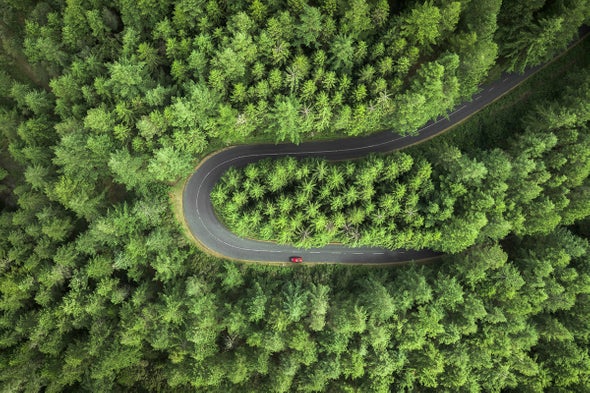
The Global Tree Restoration Potential

Earlier this month, a study appeared in Science that found that a global reforestation effort could capture 205 gigatons of CO2 over the next 40-100 years—two thirds of all the CO2 humans have generated since the industrial revolution:
The restoration of trees remains among the most effective strategies for climate change mitigation. We mapped the global potential tree coverage to show that 4.4 billion hectares of canopy cover could exist under the current climate. Excluding existing trees and agricultural and urban areas, we found that there is room for an extra 0.9 billion hectares of canopy cover, which could store 205 gigatonnes of carbon in areas that would naturally support woodlands and forests. This highlights global tree restoration as our most effective climate change solution to date. However, climate change will alter this potential tree coverage. We estimate that if we cannot deviate from the current trajectory, the global potential canopy cover may shrink by ~223 million hectares by 2050, with the vast majority of losses occurring in the tropics. Our results highlight the opportunity of climate change mitigation through global tree restoration but also the urgent need for action.
Via Science.
Scientific American unpacked the study and its potential implications:
The study team analyzed almost 80,000 satellite photo measurements of tree cover worldwide and combined them with enormous global databases about soil and climate conditions, evaluating one hectare at a time. The exercise generated a detailed map of how many trees the earth could naturally support—where forests grow now and where they could grow, outside of areas such as deserts and savannahs that support very few or no trees. The team then subtracted existing forests and also urban areas and land used for agriculture. That left 0.9 billion hectares that could be forested but have not been. If those spaces were filled with trees that already flourish nearby, the new growth could store 205 gigatons of carbon by the time the forests mature.
After 40 to 100 years, of course, the storage rate would flatten as forest growth levels off—but the researchers say the 205 gigatons would be maintained as old trees die and new ones grow. There would be “a bank of excess carbon that is no longer in the atmosphere,” Crowther says.
Via Scientific American.
Join our newsletter for the latest in long-term thinking
Subscribe